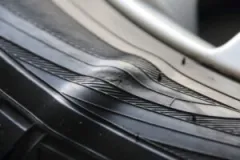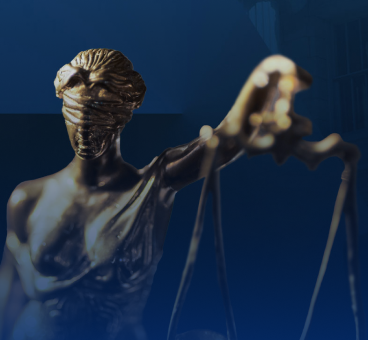
Structural damage to a car refers to any damage that affects the core integrity of the vehicle’s framework. This includes any harm to the car’s frame, chassis, or any component crucial to the vehicle’s overall stability and safety.
Recognizing structural damage is essential, especially if it resulted from a car accident, as it compromises the vehicle’s safety and significantly impacts its value and functionality. Determining structural damage is also crucial if you’re purchasing a used car. When legal issues related to structural damage to your car, Boca Raton car accident lawyers of Ged Lawyers can help you seek compensation and deal with insurance claims.
Common Forms of Structural Damage to a Car
Structural damage can manifest in several ways, each potentially detrimental to the vehicle’s safety and performance. Common types include:
- Frame Damage: Often caused by severe collisions, frame damage can alter the vehicle’s structural integrity and alignment. Signs of frame damage can be minor but can still affect a vehicle’s safety.
- Bent Axles: Impact from accidents can lead to bent or broken axles, which can affect the vehicle’s ability to drive straight.
- Damaged Crumple Zones: These zones are designed to absorb and redistribute the impact during a collision. Damage here can reduce the car’s safety in subsequent impacts.
Understanding these forms is crucial for car owners to accurately assess the extent of damage and its potential impacts on vehicle safety and performance. Remember that structural damage is not the same as cosmetic damage. Cosmetic damage is easy to spot; structural damage is often hidden.

How Does Structural Damage Happen?
Structural damage can occur through a variety of incidents:
- Collisions: The most common cause, where the impact severity directly affects the extent of structural damage.
- Natural Disasters: Events like floods or earthquakes can inflict significant structural damage on vehicles.
- Manufacturing Defects: In some cases, inherent flaws in the vehicle’s design or construction can lead to structural weaknesses.
- Poor Maintenance: Neglecting car maintenance can exacerbate wear and tear, leading to severe structural issues over time.
Identifying and Assessing Structural Damage
Professional assessment is critical in identifying and quantifying the extent of structural damage. This process typically involves:
- Visual Inspection: Experts look for visible signs of damage to the car’s frame and body.
- Diagnostic Tools: Use of advanced tools like laser scanners and frame machines to assess and confirm the integrity of the vehicle’s structure.
- Expert Consultation: Mechanics and collision repair experts can provide detailed insights and estimates for repair.
These assessments are crucial for repair purposes and legal and insurance claims, ensuring that all damage is documented and appropriately addressed.

Legal Aspects of Structural Damage to a Car
The legal implications of structural damage can be extensive, impacting liability, insurance claims, and overall vehicle usability. Key points include:
- Diminished Value: Cars with structural damage often suffer from reduced value, affecting their resale price significantly.
- Liability Laws: Depending on the state, laws regarding fault and compensation can vary. For instance, in no-fault states, each driver’s insurance may cover damages regardless of who caused the accident.
- Insurance Claims: Filing insurance claims for structural damage requires thorough documentation and sometimes legal support to ensure fair compensation.
For specific statutes, one can refer to local state traffic laws and insurance regulations available on state government websites or legal resources online.

Determining Liability for Structural Damage
Determining who is liable for structural damage involves understanding the circumstances under which the damage occurred:
- In Accidents: If another driver is at fault, their insurance may be liable for compensating damage.
- Product Liability: If the damage is due to manufacturing defects, the manufacturer might be liable.
- Service Liability: Improper services or repairs from mechanics can also lead to liability for damages.
In each scenario, liability is determined based on evidence, accident reports, and expert assessments.
How to Seek Compensation for Structural Damage to Your Car
Seeking compensation for structural damage is a meticulous process that requires detailed attention at each stage to safeguard your rights and ensure adequate restitution. Here’s an expansion on the steps mentioned:
Documentation: The Foundation of Your Claim
Compiling comprehensive documentation is crucial and should be initiated as soon as possible. This includes:
- Photographic Evidence: Take clear photos from different angles showing the damage to your vehicle.
- Accident Reports: Obtain a copy of the police report if the damage resulted from a traffic collision.
- Witness Statements: Collect contact information and statements from any witnesses to the incident.
- Maintenance Records: Assemble a vehicle maintenance history to demonstrate the car’s condition before the damage.
Insurance Notification: Initiating the Claim Process
The next step is to formally notify your insurance provider. The notification should be timely – usually within 24 hours of the incident. When you make this notification:
- Be Concise: Provide the facts without speculating about fault or liability.
- Reference Your Policy: Be aware of your policy details to discuss coverage specifics relevant to structural damage.
- Request Clarification: Ask about the process for submitting your claim and any additional information required.
Working Through the Complexities with Expertise
When structural damage intertwines with intricate legal issues, obtaining professional legal advice becomes indispensable. A legal professional can assist with:
- Understanding Your Rights: A lawyer can clarify your legal rights and the options available to you under current statutes.
- Dealing with Insurers: Attorneys are adept at negotiating with insurance companies to ensure you receive a fair settlement.
- Litigation: If necessary, legal representation can manage litigation to resolve disputes over liability and damages.
Engaging with a law firm experienced in auto damage claims can be particularly beneficial if there’s a dispute over the cause of damage, or if the insurance company contests the claim. Expert legal guidance may dramatically influence the outcome of your compensation claim. A thorough approach to each of these steps can enhance the likelihood of a successful and fair resolution to your structural damage claim.
Contact Ged Lawyers for Help with Your Car Structural Damage Claim
Understanding what structural damage to a car entails is crucial for any vehicle owner, especially following an accident or incident that may compromise the vehicle’s integrity.
Ged Lawyers provides free consultations for legal issues related to the structural damage to a car. Reach out today for a free case assessment and learn how a car accident lawyer from our team can help you.
Contact us today for your free consultation.
